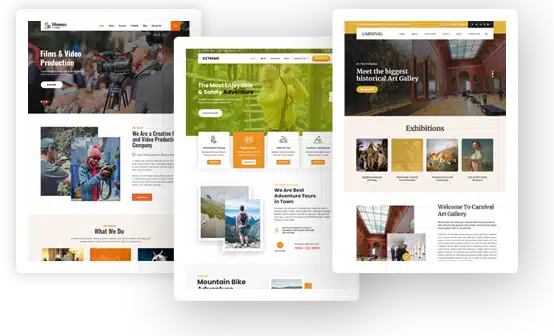Adding Voice to Your WordPress Blog: Why Text-to-Speech Enhances UX and SEO

The digital reading experience has evolved beyond traditional text consumption as users increasingly incorporate audio-based content into their daily routines. WordPress bloggers can now utilize text-to-speech technology to cater to the diverse needs of their audience.
This shift towards audio integration offers practical advantages that extend from accessibility improvements to measurable SEO benefits. Text-to-speech tools, such as Speaktor, make this transition seamless. These tools enable creators to transform written content into natural-sounding audio with minimal technical complexity.
Shifting User Behavior and Audio Consumption
Audio content has gained traction across user groups and industries. According to a Statista study published in August 2024, the average daily time spent listening to digital audio content in the United States reached 1 hour and 40 minutes in 2022, with projections indicating a further 5-minute increase by 2024. People now prefer to listen to their content while multitasking, such as during commutes, workouts, or daily routines. Blogs that integrate audio meet users where they are, allowing them to engage with content in a more immersive way.
For WordPress users, adding a text-to-speech layer bridges the gap between reading and listening habits. It opens access for visually impaired users, second-language learners, and mobile-first audiences who prefer audio for convenience or comprehension. Voice adds flexibility to how blog content is consumed and expands its utility across devices.

Key Benefits of Integrating Text-to-Speech Technology in Blog Content
Text-to-speech technology converts written content into accessible audio formats, creating inclusive digital experiences. This integration provides benefits for content creators, including enhanced accessibility and improved search engine optimization (SEO) performance.
- Enhanced Web Accessibility and Compliance: Text-to-speech enables users with dyslexia, ADHD, visual impairments, and reading fatigue to access alternative methods of consuming content. It particularly benefits public institutions, educational organizations, and international brands seeking inclusive digital experiences. AI-powered voice tools, such as Speaktor, provide natural-sounding audio in over 100 languages, along with customizable tone and pacing options.
- Improved Search Engine Optimization Performance: Audio content integration enhances SEO by improving user behavior signals, such as increased dwell time and reduced bounce rates. Search engines index embedded audio files with proper transcripts and metadata. Google’s multimodal content understanding favors accessible formats, while voice-enabled content supports emerging audio-based search features.
- Extend Content Lifespan and Distribution Opportunities: Dual-format content enables access to multiple distribution channels, transforming blog posts into podcast episodes, email assets, or social media content, thereby extending the lifespan of content and increasing distribution opportunities. This multiplies reach without creating new materials. Audio files enable platform syndication and appeal to users in low-bandwidth situations, preferring passive consumption.
- Enhance User Experience and Engagement Metrics: Audio options reduce cognitive load and create a natural browsing rhythm, especially for longer content. UX studies show higher click rates on pages with audio features and increased time-per-page metrics. Voice content enhances emotional tone through inflection and pacing, effectively reinforcing key messages.
- Multilingual Support and Enhanced Global Reach: Text-to-speech technology enables the delivery of multilingual content without the need for expensive native recordings or translation investments. AI-generated voices support various dialects and accents to match regional audiences. This is particularly beneficial for educational content, tutorials, and financial advice, where clarity is essential for comprehension.
Choosing the Right Text-to-Speech Tool for WordPress Blogs
According to WPZoom reports, around 529 million websites are built on WordPress, giving it a dominant 61.3% share of the CMS market. With such widespread use, ensuring that a text-to-speech tool integrates seamlessly with WordPress becomes crucial. Selecting an appropriate text-to-speech tool requires careful evaluation of specific features and compatibility requirements. Not every tool is suitable for every use case, making a targeted assessment essential for optimal results.
- Voice Naturalness and Pronunciation Accuracy: Prioritize tools offering human-like speech patterns with clear pronunciation. High-quality AI voices enhance user experience and maintain professional credibility for your content.
- Support for Multiple Languages or Accents: Select platforms that cater to diverse linguistic needs and regional dialects. This flexibility enables global audience reach and localized content delivery without additional investment.
- Output File Types (MP3, WAV, Embedded Player): Ensure compatibility with various audio formats and embedding options. Different formats serve specific distribution channels and technical requirements across platforms.
- Pricing Models for Regular vs. Occasional Use: Evaluate subscription plans, pay-per-use options, and free tiers based on the frequency of publication. Cost-effective pricing structures should align with the volume of content production.
- Plugin Compatibility with Major WordPress Themes: Verify seamless integration with popular WordPress themes and existing plugins. Compatibility prevents technical conflicts and ensures site functionality remains intact during implementation.
- Transparency in AI Usage: Maintain transparency by including simple notes about AI voice generation in post descriptions or audio metadata, especially for content featuring user quotes or interviews.
- Data Compliance and Security: Utilize GDPR-compliant embedding tools and inform users about the use of cookies and tracking. Review free tool versions for external branding or links that may affect compliance requirements.
Effective text-to-speech integration requires positioning visible audio players prominently, including transcripts for accessibility, maintaining transparency about AI generation, optimizing audio file metadata for SEO, and tracking engagement metrics to measure content performance and user interaction patterns.
Conclusion: Adding Voice Builds Value
Text-to-speech integration represents a strategic enhancement for WordPress blogs, addressing the diverse content consumption habits of modern users while strengthening accessibility standards. Rather than replacing written content, audio serves as a complementary channel that extends reach and engagement.
Text-to-speech tools like Speaktor demonstrate how creators can efficiently implement voice functionality, transforming existing content into multi-format experiences. This approach builds lasting value by meeting users where they are, whether they are commuting, multitasking, or simply prefer audio consumption for enhanced comprehension and convenience.

